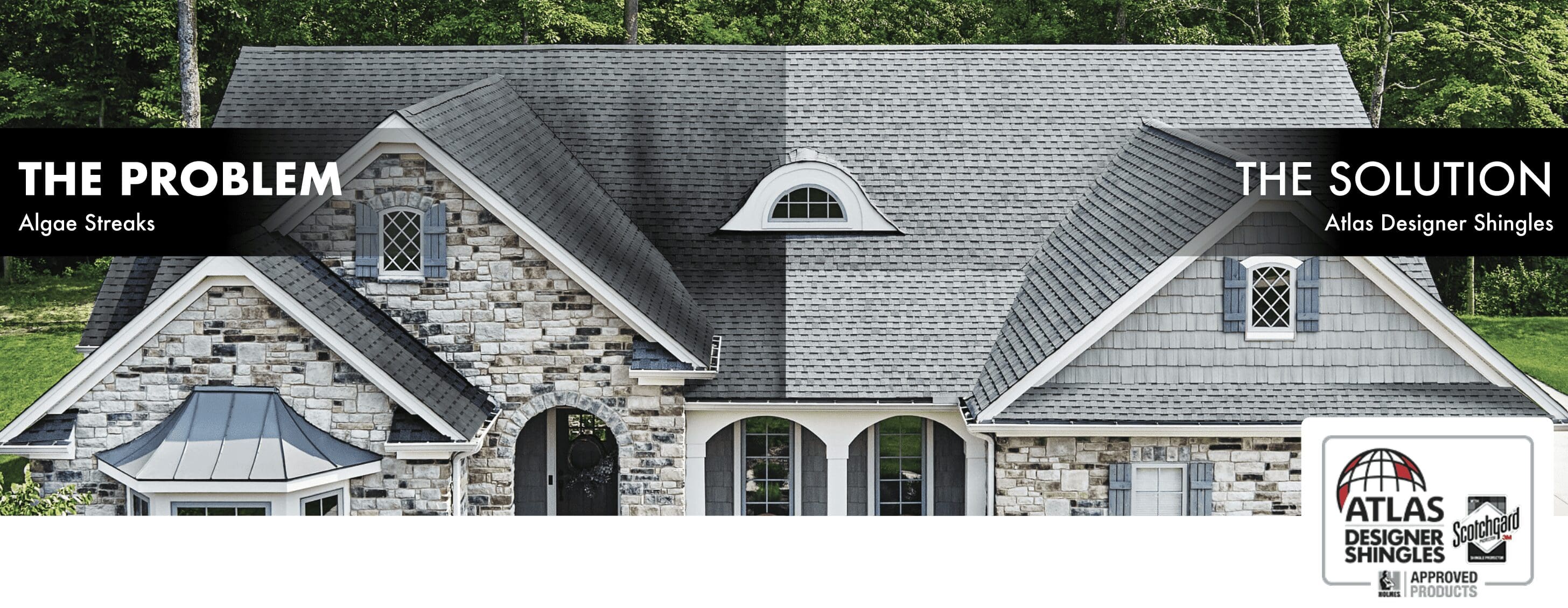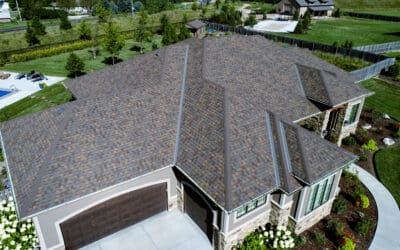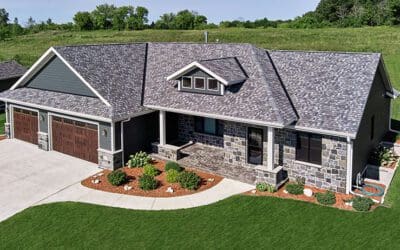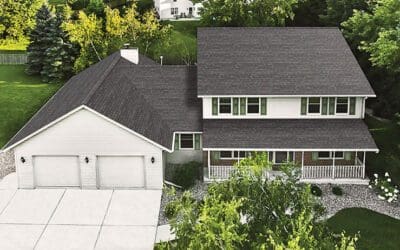As a homeowner, maintaining the health and longevity of your roof is a top priority. While dirt and leaves are common debris that accumulate on rooftops, there is a lesser-known issue that can pose a significant threat: roof algae. Contrary to popular belief, what appears as “roof mold” is often a type of algae called Gloeocapsa magma. This algae can lead to unsightly stains and growths on your roof, ultimately causing damage and reducing your home’s curb appeal. This article will explore the dangers of algae on your roof and provide some tips for prevention and treatment.
Recognizing Roof Algae
Roof algae typically manifest as discolorations on your roofing materials, such as:
- Black streaks
- Green or white spots
- Round lichens
- Mosses
If you notice any of these signs, it’s essential to consult a roofing professional for an inspection and recommended course of action.
Causes of Roof Algae
Algae spores can be carried by wind and deposited onto your roof. They thrive in humid environments, particularly in shady, damp areas. Algae growth is further fueled by the limestone filler found in most roofing shingles, which provides nutrients for the spores. Clogged gutters, standing water, porous roofing materials, and poor roof ventilation can all contribute to roof algae growth.
Types of Roof Bacteria
Different types of bacteria can grow on your roof, including:
- Algae: Most commonly characterized by black-green stains
- Lichen: A combination of algae and fungus that can be difficult to remove and cause damage to shingles
- Moss: Similar to lichen but with root-like rhizoids that anchor it to your shingles and promote algae/lichen growth
- Mold: Appears as black or brown blotches and thrives in damp areas
- Mildew: Grows on damp surfaces and can cause health problems, appearing in various shades, from black to pink
Dangers of Roof Algae
Algae growth on your roof can lead to several issues, including:
- Unsightly appearance: Algae stains can diminish your home’s curb appeal.
- Reduced home value: Potential buyers may be deterred by a roof with algae, which could signal considerable damage and the need for replacement.
- Wood rot: Excess moisture trapped by algae can cause wood to rot, weakening your roof’s structure and potentially leading to leaks.
- Mold growth: Moisture and algae can create a breeding ground for harmful mold.
- Roof integrity: Untreated algae can cause long-term damage, shortening your roof’s lifespan and potentially necessitating a full replacement.
- Spread to other structures: Algae spores can travel to other buildings on your property, causing widespread damage.
- Health risks: Mold and mildew resulting from algae growth can lead to respiratory problems, allergies, and other health issues.
Prevention and Treatment
To prevent roof algae, it’s important to create an unfavorable environment for spores. Increase sunlight exposure by trimming overhanging branches and schedule regular roof and gutter maintenance. You can also invest in algae-resistant roofing materials or treat your shingles with moisture-resistant chemicals.
If algae growth is already present, consult a roofing professional for proper treatment. DIY cleaning methods, such as using bleach and water, can cause further damage and leaks. A roofing contractor can safely remove the algae and recommend preventative measures.
Roof algae pose a significant threat to the health and appearance of your home. If you suspect algae growth on your roof, contact a roofing professional for an inspection and appropriate treatment. Taking swift action can prevent long-term damage and protect your home’s value.





